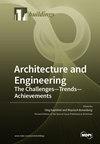人造砂对自密实椰壳混凝土新鲜性能、强度性能和形态特征的影响
IF 3.1
3区 工程技术
Q2 CONSTRUCTION & BUILDING TECHNOLOGY
引用次数: 0
摘要
本研究考察了掺有碎椰壳和人工砂(M-砂)的自密实椰壳混凝土(SCCSC)的新拌特性、强度性能和形态分析。椰壳碎料(CS)用作粗骨料(CA),人工砂以 25%、50%、75% 和 100% 的比例取代河砂(R-sand)。研究重点是 SCCSC 的可加工性特征、力学行为和微观结构分析。对新鲜特性和机械特性进行了实验,包括坍落度流动直径、T500 坍落度流动时间、L-Box 阻塞比、V 型隧道和湿筛稳定性测试。机械特性包括抗压、劈裂拉伸、抗弯、抗冲击和粘结强度。中砂的使用提高了淤泥砂浆的机械性能。在这项研究工作中,使用扫描电子显微镜(SEM)、能量色散光谱(EDS)、傅立叶变换红外(FTIR)和 X 射线衍射(XRD)技术对形态特征进行了研究。研究结果表明,添加中砂可提高混凝土强度。微观结构分析表明,在 SCCSC 中添加不同数量的混合砂可降低孔隙率和无水水泥比例,但会增加氢氧化钙和水化产物。与参考 SCCSC 相比,在 28 天时添加 100%的混合砂可将抗压强度提高 3.79%。根据研究结果,与含河砂的混凝土相比,含河砂的 SCCSC 的机械强度明显提高。本文章由计算机程序翻译,如有差异,请以英文原文为准。
Influence of Manufactured Sand on Fresh Properties, Strength Properties and Morphological Characteristics of Self-Compacting Coconut Shell Concrete
This research examines the fresh properties, strength performance, and morphological analysis of self-compacting coconut shell concrete (SCCSC) blended with crushed coconut shell and manufactured sand (M-sand). Crushed coconut shell (CS) was used as a coarse aggregate (CA), and M-sand replaced river sand (R-sand) at 25%, 50%, 75%, and 100%. The study focused on the workability characteristics, mechanical behavior, and microstructural analysis of SCCSC. Experiments were performed on fresh and mechanical characteristics, including slump flow diameter, T500 slump flow time, L-Box blocking ratio, V-funnel and a wet sieving stability test. Mechanical characteristics include compressive, split tensile, flexural, impact resistance and bond strength. Utilizing M-sand develops the mechanical performance of SCCSC. The morphological characteristics, using scanning electron microscopy (SEM), energy-dispersive spectroscopy (EDS), Fourier transform infrared (FTIR) and the X-ray diffraction (XRD) technique, were studied in this research work. The findings show that the addition of M-sand increases the concrete strength. The microstructural analysis demonstrates that adding different amounts of M-sand to SCCSC reduced the porosity and anhydrous cement percentage, although it increased calcium hydroxide and hydration products. The substitution of 100% M-sand at 28 days increased compressive strength by 3.79% relative to the reference SCCSC. Based on the findings, the mechanical strength of SCCSC containing M-sand significantly improved compared to the concrete with river sand.
求助全文
通过发布文献求助,成功后即可免费获取论文全文。
去求助
来源期刊

Buildings
Multiple-
CiteScore
3.40
自引率
26.30%
发文量
1883
审稿时长
11 weeks
期刊介绍:
BUILDINGS content is primarily staff-written and submitted information is evaluated by the editors for its value to the audience. Such information may be used in articles with appropriate attribution to the source. The editorial staff considers information on the following topics: -Issues directed at building owners and facility managers in North America -Issues relevant to existing buildings, including retrofits, maintenance and modernization -Solution-based content, such as tips and tricks -New construction but only with an eye to issues involving maintenance and operation We generally do not review the following topics because these are not relevant to our readers: -Information on the residential market with the exception of multifamily buildings -International news unrelated to the North American market -Real estate market updates or construction updates
 求助内容:
求助内容: 应助结果提醒方式:
应助结果提醒方式:


